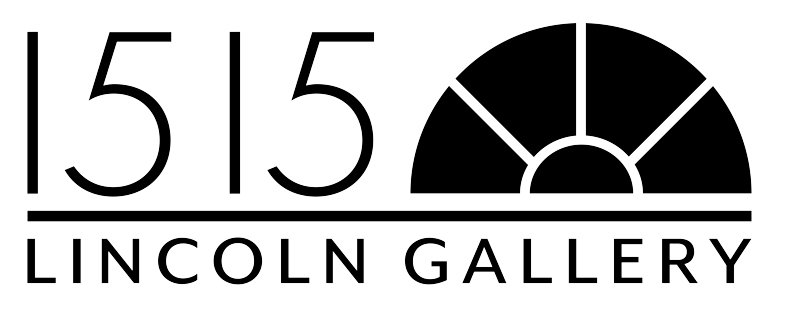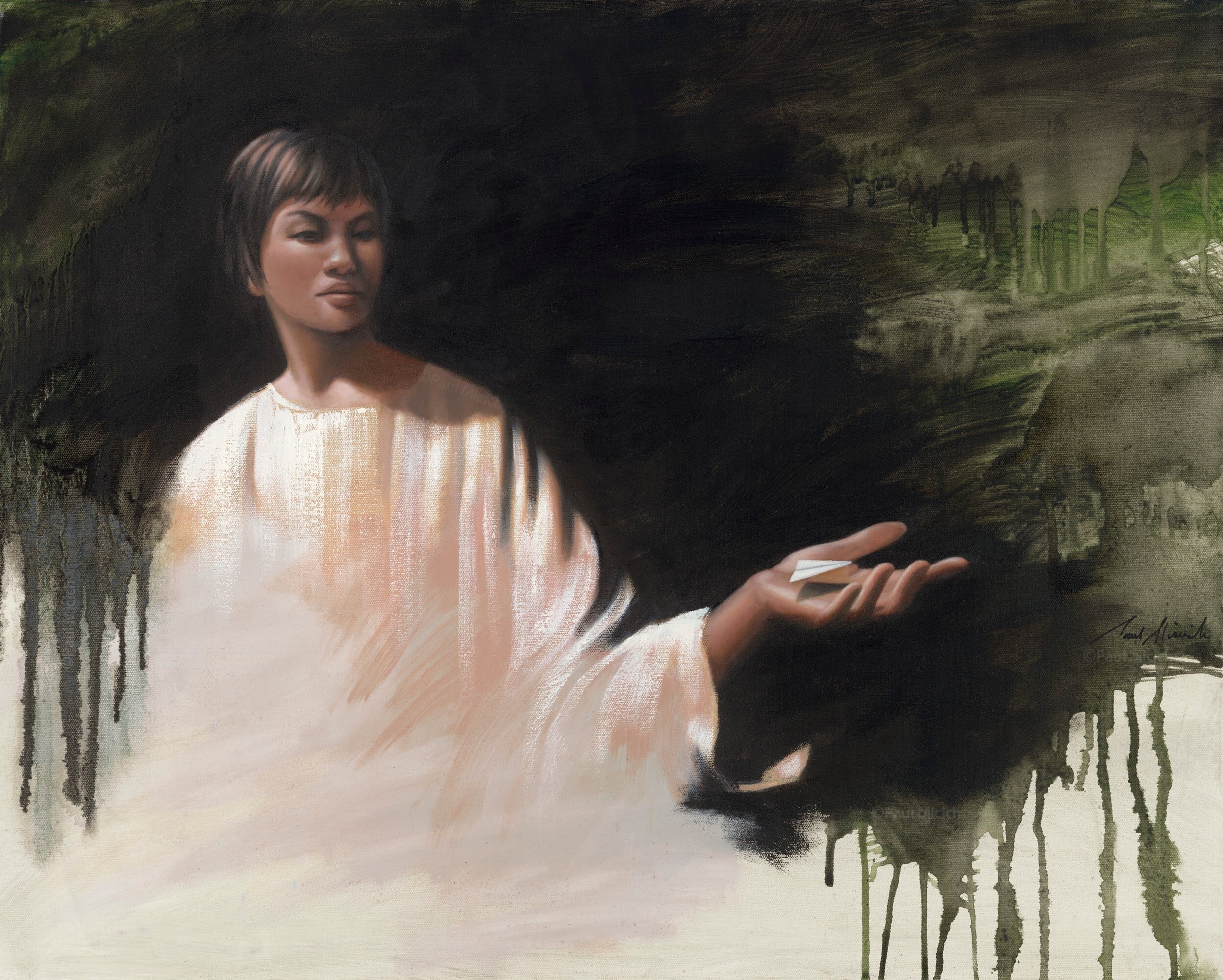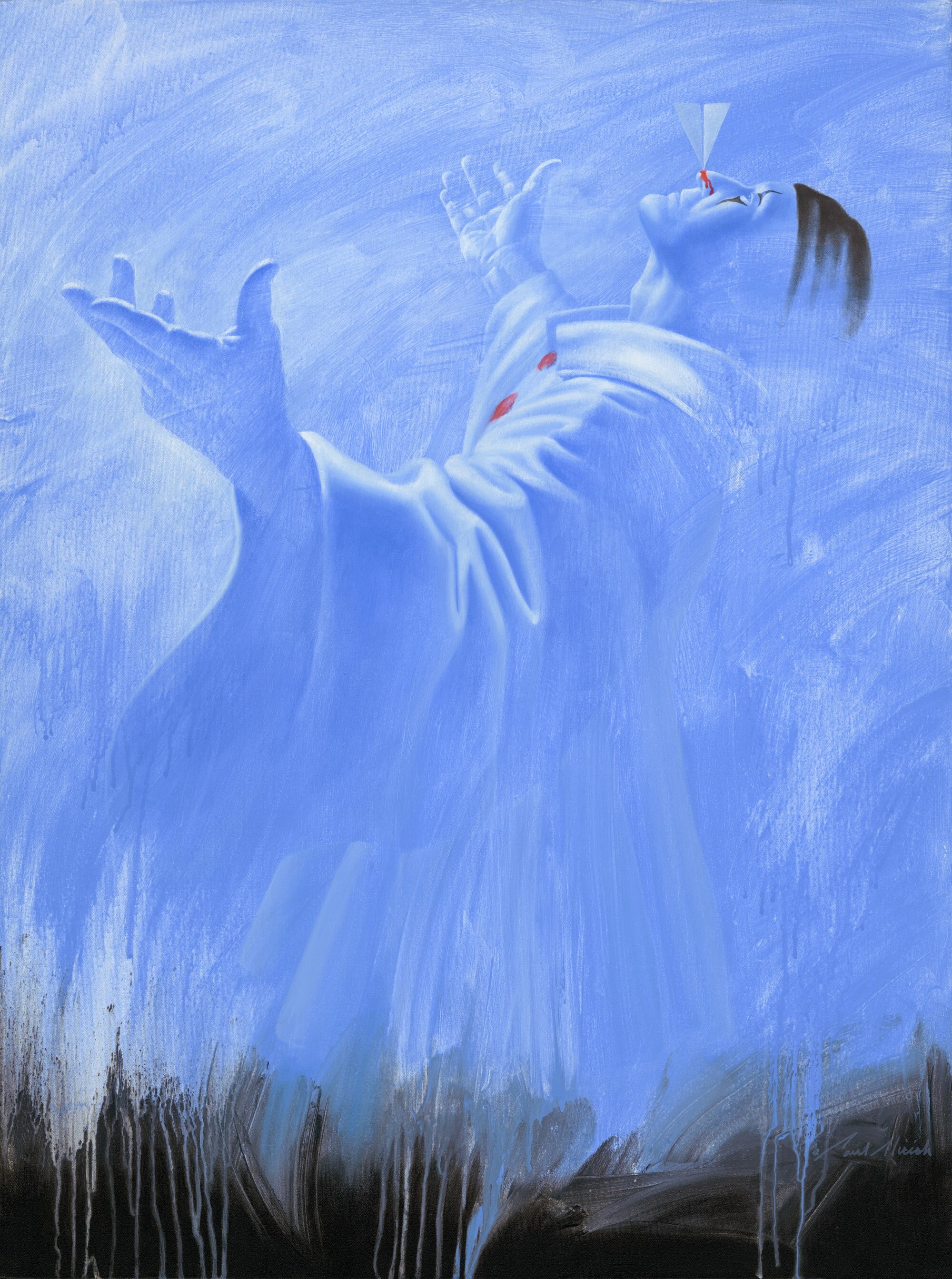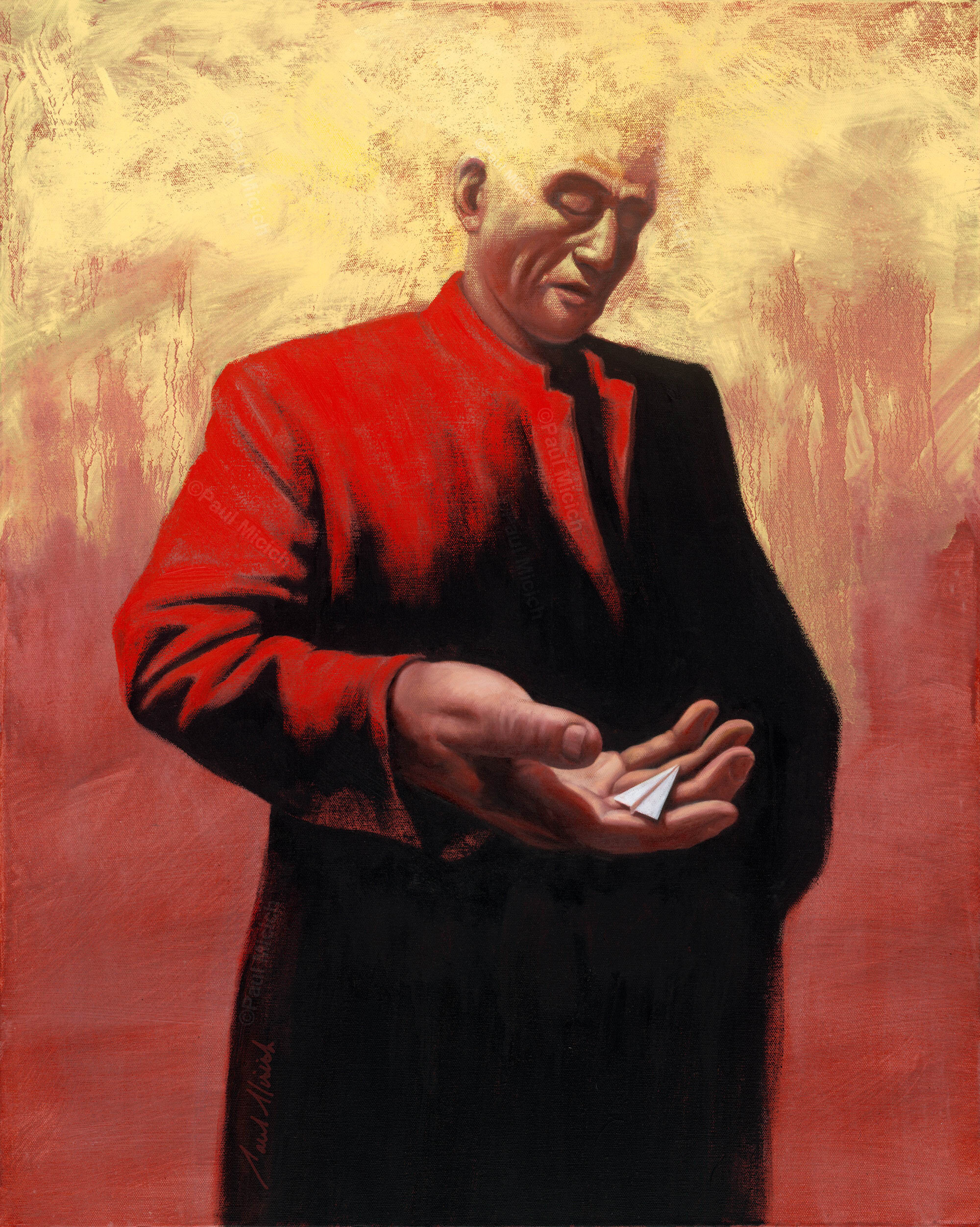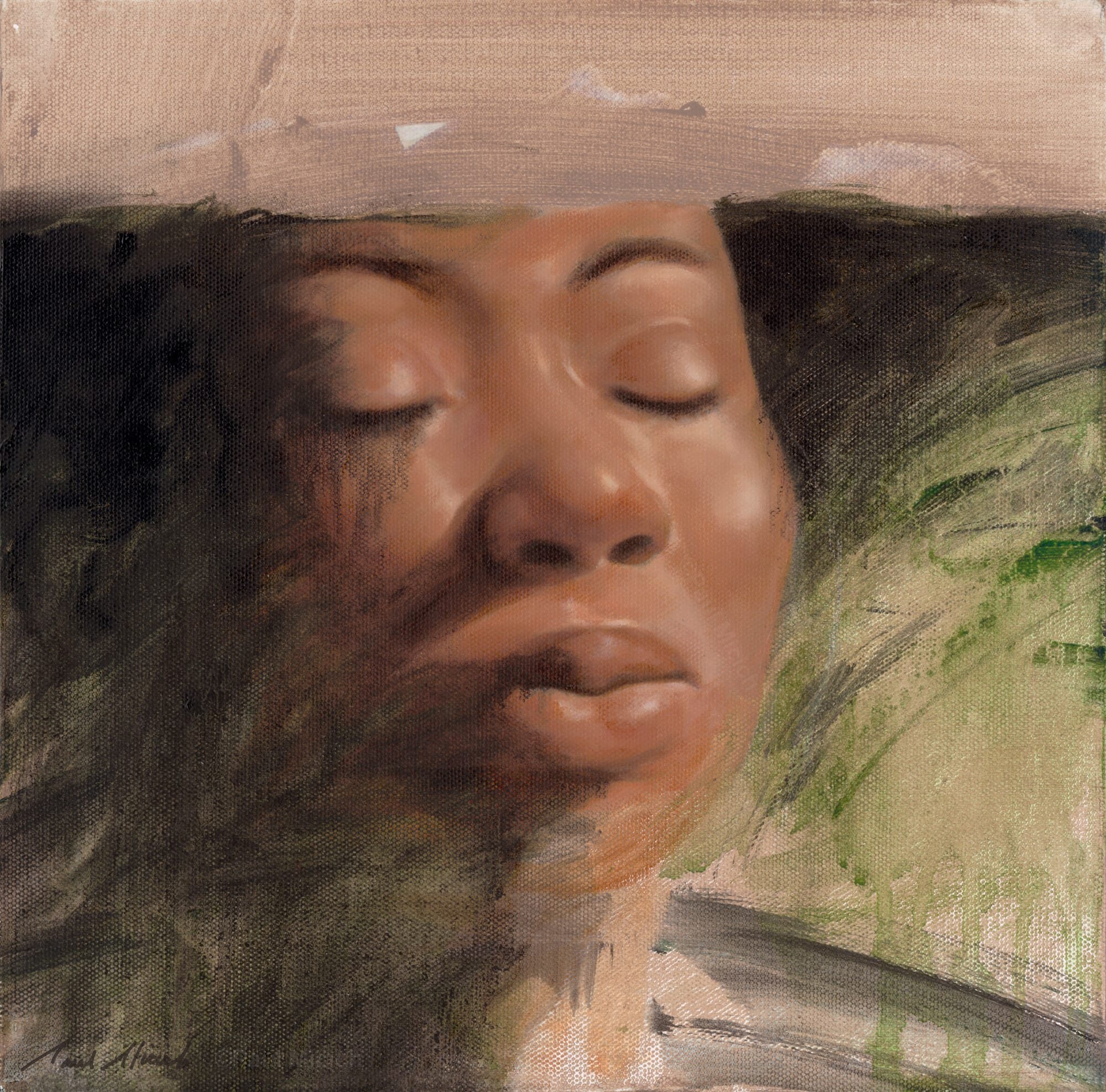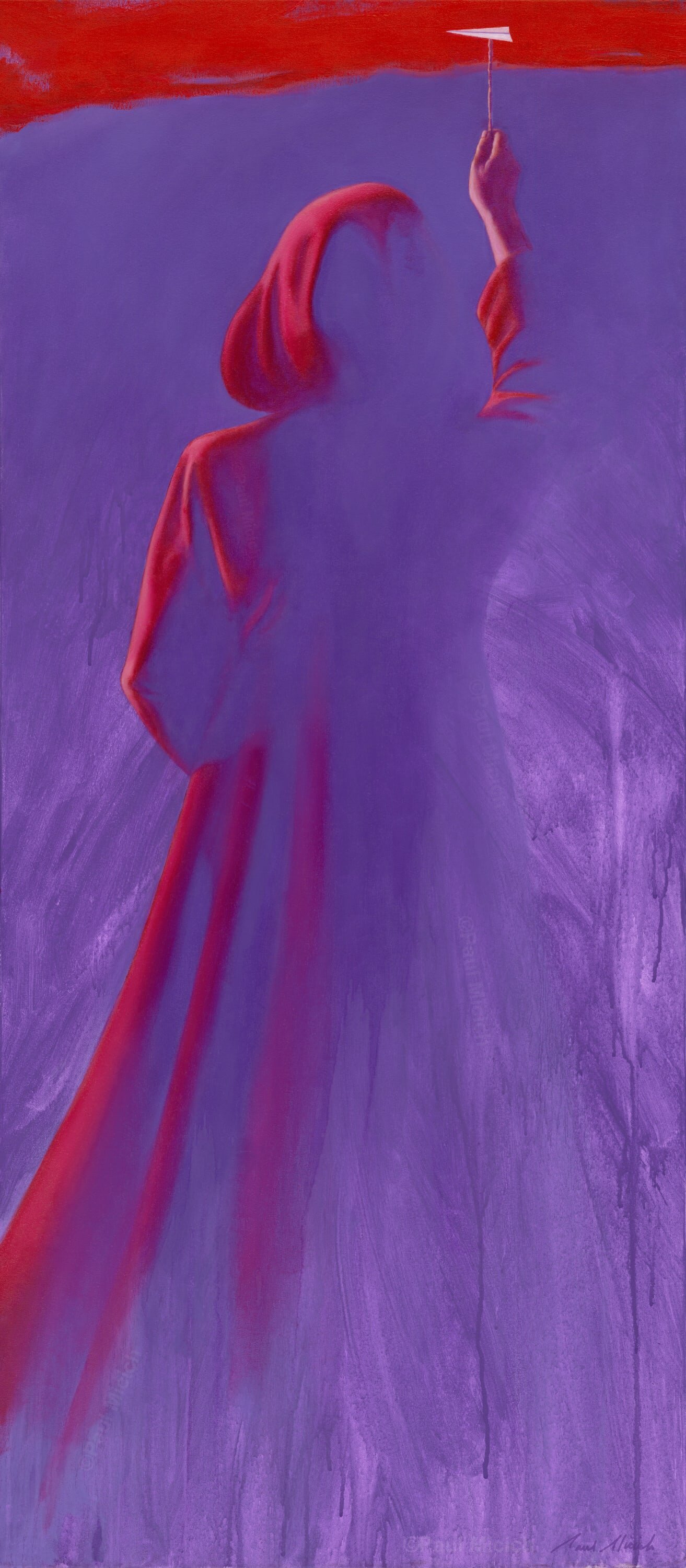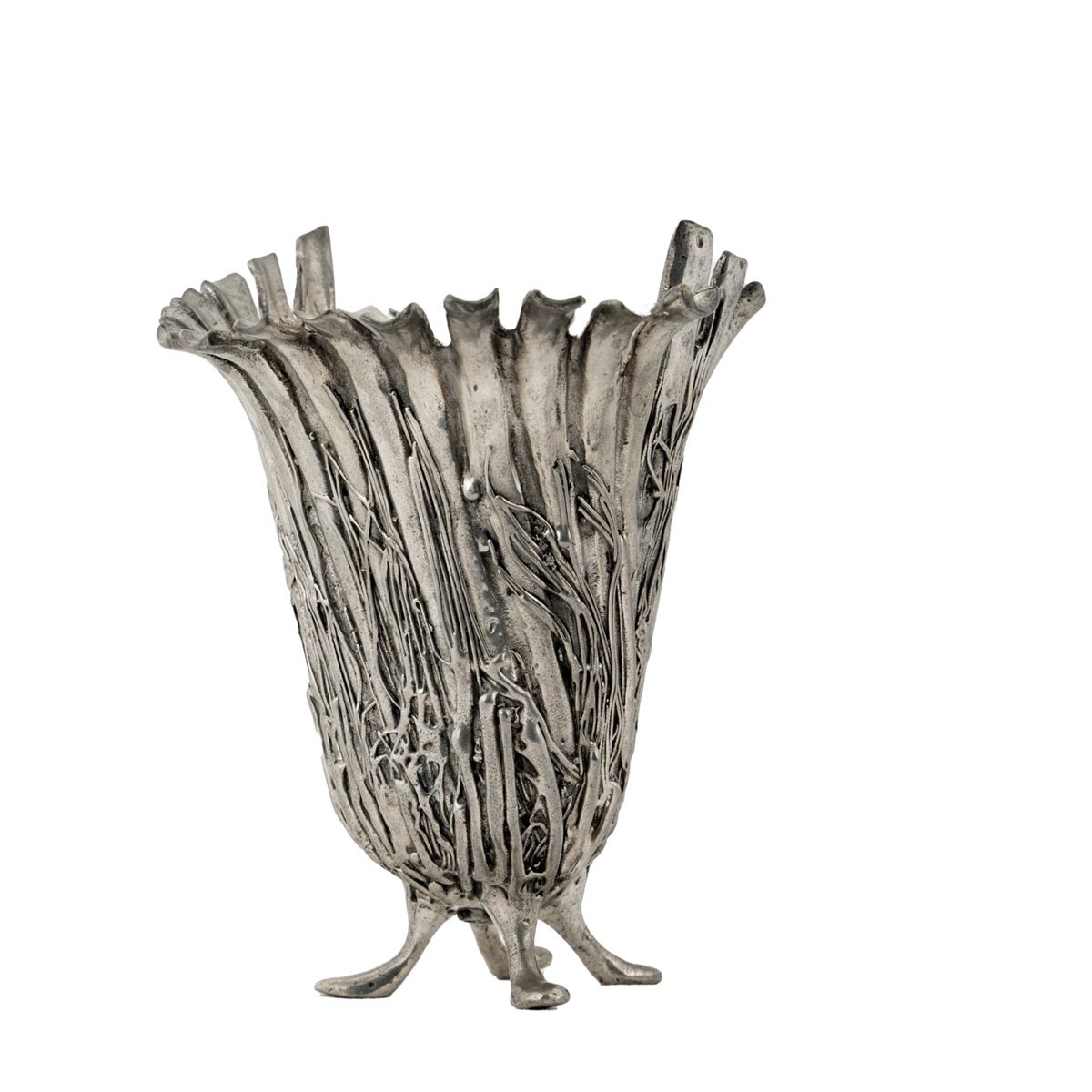PAUL MICICH
“I paint and make music so that I can dig deep to discover the world and share that experience.”
BIOGRAPHY
Paul Micich has been playing a duet between music and art throughout his life. One leading, then the other. One sustaining, while the other steps forward. But both always present. The rhythm of a line. The coloring of a phrase. The balance, the focus, the excitement, the heartbeat. All necessary for the work at hand and from his hand. He’s not exactly a farm boy. His family left behind their 180 acres in northern Iowa for greener pastures in Des Moines when he was eleven. But he was able to see close-up the work that drives that life, the long-view work, the work-around and work-around-again work. And always, the work by hand. Micich has been a professional musician, composer, teacher, graphic designer, art director, creative director, illustrator and gallery artist. His thirty-year art career has been spent bringing life to characters on the blank page to tell stories for clients like The Atlantic Monthly, RCA Records and Children’s Press. His illustrated edition of Iowa author Charles Tazewell’s book, “The Littlest Angel,” sold over 1.4 million copies, and his illustrated book for another Iowa author, Mary Kay Shanley, became a regional best-seller. Micich’s work has garnered him Gold and Silver Awards from the Los Angeles Society of Illustrators and inclusion in annuals for The Society of Illustrators of New York, Communication Arts and Spectrum Annual of Fantastic Art. He lives with his wife, Anita, in a renovated 19th Century school house close to Des Moines. His short walk to work passes an old oak framed barn as he enters another remade farm building that is his studio. “This has always been a place of working with your hands, of making things. I can feel that when I come here. There’s a momentum to it that travels into my paintings.” For part of every day, there’s music coming from Micich’s studio, propelled by his breath and imagination. “Music and art are magic to me, both a performance and a meditation. There’s an interplay between them that informs all I do; the spirit of it, the discipline, the freedom, the absolute necessity of the music playing me and of my canvases showing me their stories.”
ARTIST INSIGHTS
How are your background and life experiences connected to your art?
Life, music and art are wrapped together for me, like a rough hemp rope. They have pulled me forward and pulled me back. And stretched forward beyond my sight. But I am mesmerized and always drawn to the next glimpse of where that line will lead me.
Who are some of your biggest artistic influences?
A little short-term archeological case study of my studio: Setting: Ample enough space, but obscured. Obscured by viral work-product, obviously spreading from the drawing boards to all the horizontal surfaces, including the floor. Many species of stacked-up drawings, paintings and undifferentiated scraps and tatters. Finding after digging: Five books: Gerhard Richter-Panoramas, Hans Hartung-Musee d’art Moderne de Paris, Joel Shapiro-1990 Des Moines Art Center, Marcos Mateu-Mestre- Framed Perspective Vol.2, Richard Schmid-Alla Prima. I love these books and the work of these artists, but in another couple weeks there will be others, brought out to knock me over with their existence and lift me up with their possibilities.
How have you developed your artist career?
I have been a professional musician, composer, teacher, graphic designer, art director, creative director, illustrator and gallery artist. Each one has shaped my sensibility, workflow and vision. As I stand at my drawing board with my paints and brushes, I really can’t think of any of the twists and turns and hues of my career I wouldn’t want to have on my palette.
What does your artistic work intend to communicate to its audience?
Each empty canvas begins a journey for me. I set out with the best of intentions, the highest of hopes, eager to find what lays on the other side of that vast blankness…Or maybe not…maybe I just make a mark…and that mark tells me what the next mark will be…and so on. Either way, I’m in. I’m in for the maybe-this-way and the maybe-that-way, for the wrong turns, the blind alleys and the open roads. Even the No-Ways! But if I do it right, if I pay attention, the people I find in my canvases will begin to tell their stories for me, and for the viewer.
Does your work comment on any current social or political issues?
Dear people of the world, I can’t find you all in my canvases, but I wish I could, all of you.
Do you have a particular story that stands out from your career as an artist?
My trumpet teacher in college suggested a music book for me called "Drawing on the Right Side of the Brain," by Betty Edwards. Despite the title, it turned out to be a valuable book for me as a musician. It’s an enduring part of my approach to playing. But it also had these drawing exercises in it… I wonder what could happen with that?
What is one thing you would like your audience to know about you?
The blank page is my workplace, not a destination, but a door.
Which current art world trends are you following?
We are living in a world that the art commentator, John Seed, calls Disrupted Realism. I’m drawn to that confluence of realism and the abstract. I’m excited to watch it unfold and to consider its possibilities.
Why have you chosen to sell your work in the 1515 Lincoln Gallery?
It’s inspiring to be a part of the international community of artists that 1515 Lincoln Gallery represents. I experience a personal quality about the gallery and staff that I know extends to the collectors and other visitors to 1515 Lincoln Gallery.
What do you believe makes 1515 Lincoln Gallery distinct from other galleries?
1515 Lincoln Gallery is experienced and comfortable in connecting collectors and visitors to the varied work of the artists they represent, both in person and online. I’m pleased my work is being represented with a personal touch. I'm also pleased that they are located in Oklahoma City, a community with a long history of support for the arts and artists.
WATCH
Learn more about Paul Micich and his artistic practice in an installment of 1515 Lincoln Gallery Conversations.
Also watch “Fly” by Paul Micich
ARTIST STATEMENT
I make paintings of people who are dreamers. I find them in my canvases. They’re a lot like you and me, always more than meets the eye. The physical tools I use most to make my paintings are acrylics and alkyd-based oils for finish on gessoed canvases, most ranging in size from 24”x30” to 30”x40” to 42”x54.” Conceptual tools I often call on are surreal storytelling and vujà dé, finding the surprising in the ordinary.
Horizon Line by Paul Micich
Big Blue by Paul Micich
“How much of painting is design? How much of drawing is rhythm? Is my work a performance, a meditation or both?”
PAUL MICICH’S AVAILABLE ART
“I make paintings of people who are dreamers. ”
